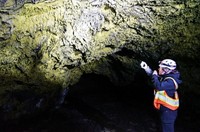Advertisement
Grab your lab coat. Let's get started
Welcome!
Welcome!
Create an account below to get 6 C&EN articles per month, receive newsletters and more - all free.
It seems this is your first time logging in online. Please enter the following information to continue.
As an ACS member you automatically get access to this site. All we need is few more details to create your reading experience.
Not you? Sign in with a different account.
Not you? Sign in with a different account.
ERROR 1
ERROR 1
ERROR 2
ERROR 2
ERROR 2
ERROR 2
ERROR 2
Password and Confirm password must match.
If you have an ACS member number, please enter it here so we can link this account to your membership. (optional)
ERROR 2
ACS values your privacy. By submitting your information, you are gaining access to C&EN and subscribing to our weekly newsletter. We use the information you provide to make your reading experience better, and we will never sell your data to third party members.
Physical Chemistry
Worldwide Hunt For Missing Carbon Minerals Begins
Geology: The Carbon Mineral Challenge seeks help from scientists and public to learn more about carbon’s role on Earth
by Elizabeth K. Wilson
December 21, 2015
Calling all rock hounds, the Deep Carbon Observatory (DCO) wants you.
According to a new predictive model, more than 140 carbon mineral species on Earth have yet to be discovered, and DCO scientists have launched a citizen science project called the Carbon Mineral Challenge to find them.

Over the next four years, teams around the world will study samples of carbon minerals submitted not only by academic mineralogists, but by amateur collectors and explorers. Got some unusual-looking minerals you’ve collected and stored in your garage? Head to the Carbon Mineral Challenge’s website to see whether they might be worth scrutinizing, says Robert Hazen at the Carnegie Institution’s Geophysical Laboratory and executive director of DCO.
As an institution devoted to exploring carbon’s role on a planetary scale, DCO has a particular interest in carbon minerals. Carbon plays a role in all of Earth’s biology and in fundamental processes from the atmosphere to Earth’s core. The discovery of new carbon mineral species could also add immeasurably to research on materials, energy, and climate. “The chemistry of carbon tells us a lot about the chemistry of Earth,” Hazen says.

Most of the mineral species we know of have been found serendipitously—a large number of those by amateur mineralogists.
Hazen and his colleagues recently developed a method that combines the distributions and locations of known minerals with statistical methods used in biology and lexicography to predict the number of unknown carbon minerals on Earth. Scientists have catalogued 5,027 mineral species, of which 406 contain carbon. The new analysis, currently in press in American Mineralogist, predicts that there are still about 145 carbon mineral species left for the finding.
Hazen and his colleagues announced the program, which is partly funded by the Alfred P. Sloan Foundation, on Dec. 17 at the American Geophysical Union meeting in San Francisco.
International teams of mineralogists are ready to vet promising candidates, determining compositions with electron microprobe analysis and crystal structures via X-ray crystallography.
“It will be fascinating to see what new and exciting carbon minerals might be lurking in our Smithsonian collection drawers,” says Jeffrey E. Post, chair of the mineral sciences department and curator of the National Gem & Mineral Collection at the Smithsonian Institution. “And what impact they might have on understanding our planet.”





Join the conversation
Contact the reporter
Submit a Letter to the Editor for publication
Engage with us on Twitter